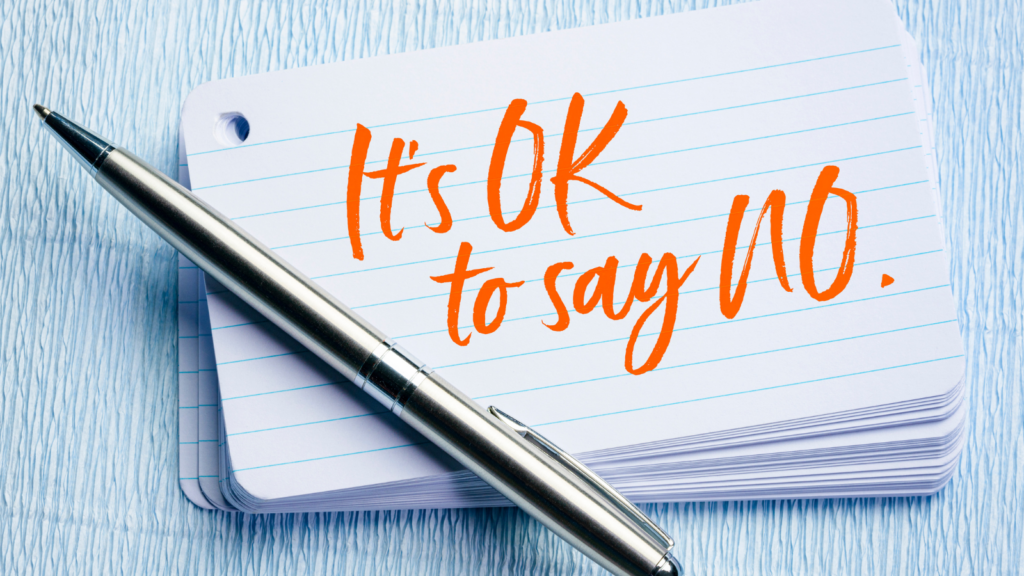- Judith Akatugba
- 0 Comments
- 762 Views
Unfortunately, the word “yes” often comes tumbling out of the mouths of well-meaning individuals when they open them to say no.
“We’ve all been there,” remarks Vanessa Bohns, a professor of organizational behavior and chair of Cornell University’s department. The seemingly simple word “no” can actually induce a cascade of nerves in the speaker. Right off the bat: Does it provide us any insight into who we are? A team player, a good person, and someone who is helpful are qualities that Bohns and her colleagues want to convey, but they are afraid they are sending the wrong message. “We’d rather not work hard or take on a challenge.”
She also points out that we probably worry about how the other person will take offense to our “no” and how it will reflect on our connection with them. You might interpret Bohns’s words as saying, “it’s telling the person, ‘Your standing with me is not what you thought it was.'” Our proximity is exaggerated. On the other hand, such worries are usually exaggerated.
Read Also: How Food Can Impact Your Emotional Well-being
Learning to say “no” actually has many positive effects. Saying yes to everything makes people want to ask you to do it again and again, according to Bohns, author of You Have More Influence Than You Think. “Becoming the go-to person for everything can have negative consequences, such as burnout, difficulties balancing work and personal life, feelings of exploitation, and a decrease in personal autonomy.” On top of that, neglected interests, relationships, or initiatives could result from a lack of self-control in saying no. Bohns notes that whenever we agree to anything, we’re really just saying no to something else.
Knowing what is and isn’t worth your time is the first step in saying no with conviction. That can get murky when you factor in things like societal expectations and the weight of duty. Associate dean for research at the Bauer College of Business at the University of Houston and author of The Power of Saying No, Vanessa Patrick, proposes using a basic cost-benefit framework to gain clarity. To make a decision, you must basically consider the downsides of saying yes to yourself compared to the upsides for the other person.
For instance, you may find that some requests are straightforward and will really benefit the person making them. For Patrick, this entails penning letters of recommendation. Although it’s not too difficult for me to undertake as a professor, my students will greatly benefit from it. She assures them that they have a chance to attend their preferred college. Still others will necessitate substantial effort from you while providing little value to the other party. The question is referred to as “bake your famous lasagna,” she explains. Envision yourself invited to a dinner gathering where you are requested to prepare an elaborate cuisine that requires a significant amount of time in the kitchen. “Oh, it could be tasty and you could even become famous for it, but trust me, it will be served alongside store-bought cookies from everyone else,” she remarks. It’s not worth your time, so politely decline.
Remember that practice makes perfect, so don’t freak out if that still gives you the willies. If you want to improve your ability to say “no,” experts recommend trying these methods.
Make sure your words have purpose.
Someone may have told you that “no” is a full sentence. Of course, but as Bohns notes, it’s not always easy to just leave it at that. Instead, she suggests saying three things: “It’s not because of me, it’s not because of you, and it’s not because of us.”
One method to accomplish this is to express gratitude when others mention you—this will convince them that their request was not insensitive. “I would love to, but I simply do not possess the requisite time at this very moment.” To paraphrase Bohns, it’s important to make it obvious that saying “no” isn’t a reflection of your character, the other person, or the relationship; rather, it’s just a circumstance.
Always be prepared with a catchphrase for such unexpected meetings.
Of course, not every circumstance necessitates such careful consideration. Remember those instances when you were anxious about saying “no,” and come up with alternatives for when you need to say it more firmly. For instance, Bohns frequently receives requests to donate to various causes when she is making her grocery store purchases. The phrase “I already donated this year” has become her default response. What she really means is that she is still a nice person, and that’s what it boils down to. These potentially uncomfortable situations are considerably more manageable when you have a prepared phrase ready to go.
Extend the period.
Discover strategies to buy yourself more time if you have a tendency to unintentionally agree when you’re pressured. “Give me some time to consider it and I’ll get back to you,” is one possible response that Bohns advises. Alternatively: “I’ll check and get back to you via email.” In this way, you can contemplate the request in peace, make an informed choice, and decline in person or via electronic means as you see fit.
Keep it simple.
When declining an offer, the delivery is crucial. Be as straightforward as possible, says clinical psychologist and author Ellen Hendriksen in her book How to Be Yourself. This includes not making it seem like you’re constantly apologizing or making excuses. It sets the tone for a more neutral engagement if we convey that this is no huge deal and that we’d like to help but are unable to, she says. According to her, one approach would be to encourage children to ask challenging questions using a tone similar to that which would be used while ordering a sandwich. You can use the same tactic to politely decline an offer. Are you too busy to assist your sister-in-law’s second cousin with the relocation to her apartment? In other words, don’t add mayo; it’s a tuna sub.
Use the broken-record method.
Every group has that one man who refuses to accept no for an answer. Hendriksen explains the broken-record technique as a way to deal with someone who is exerting excessive pressure. The key, she explains, is to “stick to your answer” by repeatedly providing the same response. You may show empathy and be courteous without being heartless. But be careful not to allow your no turn into a maybe or a “OK, for this one time.” Even the most tenacious individuals will usually understand the point after two or three repetitions, she adds, but occasionally the asker will become frustrated.
Use your body language to bolster your statement.
Maintain consistency between your words and your body language. Patrick suggests making it obvious that your “no” is about you and not the other person by smiling, leaning forward, or breaking from an embrace. She assures the person that with her guidance, they would be able to refuse with more conviction. Averting your gaze is one example of body language that might convey vulnerability and nervousness; try to keep it to a minimum.
Every time you say “no,” keep a visual reminder of the impact it has.
Just exactly are you giving up by agreeing to bring two dozen cupcakes to book club or to serve on that work committee? As a constant reminder, Bohns recommends keeping an inspirational photo on hand. She warns that it could be either a child or a dog. It can be a pastime that you really enjoy. It will give you the strength to say yes when you truly don’t want to when you put it near your phone or computer. Take it with you and keep in mind: “If I agree to this, I’m essentially rejecting my daughter’s request that we read a book later.”
Make it easy for them to answer no by framing your queries in that way.
Making it simpler for other people to say no to your requests is a good idea while you work on perfecting your “no” skills. Bohns notes that it’s mutually beneficial: Instead of someone saying yes and then backing out at the last minute, most of us would rather hear a decisive no. People have a hard time saying no when they’re cornered, particularly in person, so be careful how you phrase your request so they have time to consider it. “I believe you might like this project, but I don’t want you to feel pressured,” she regularly says when discussing projects with her graduate students. Have a night’s rest and then send me an email.
“You can totally say no” is a common request phrase, according to Bohns’s unpublished research. The folks we’re interacting with are aware of this, but they’re stuck trying to put it into words. So, providing them with the necessary language to do so could be a fix. “If you don’t want to do it, just say you can’t right now.” is one possible way to phrase it. “Essentially, provide them with a phrase that they can respectfully repeat back to you,” advises Bohns. Such is, “Here are some phrases that I will take as a negative.” We’ve discovered that it helps people feel more at ease.











